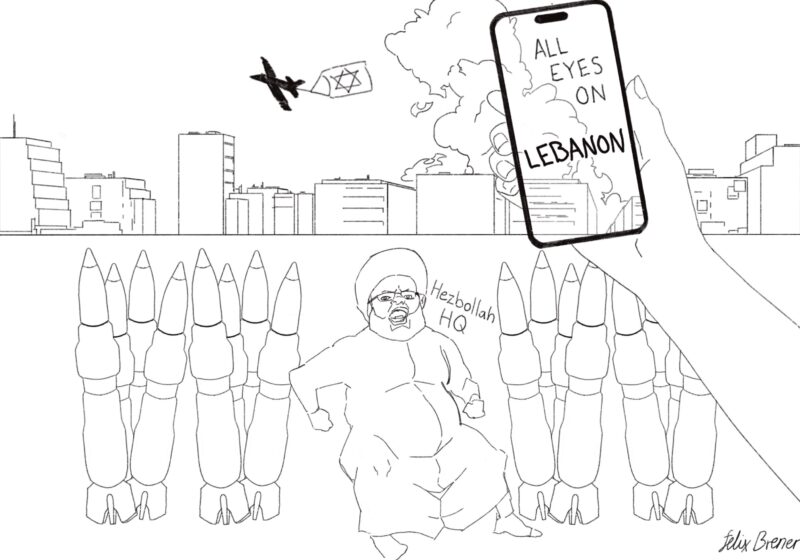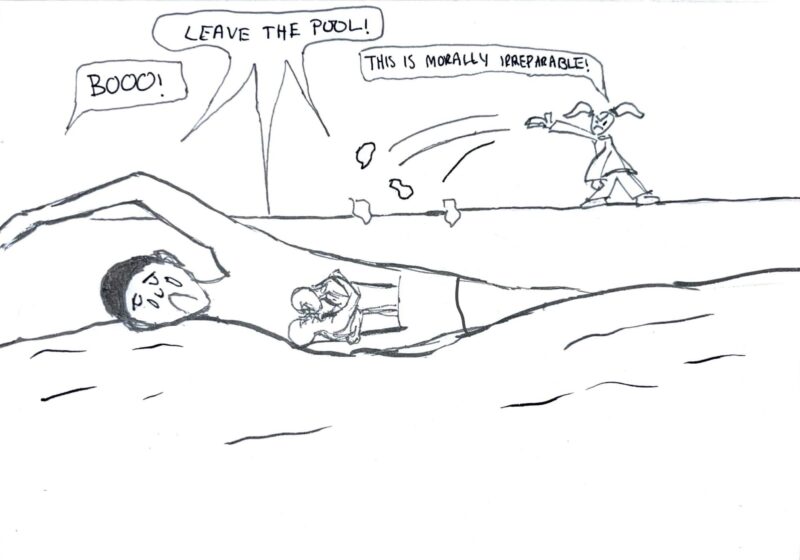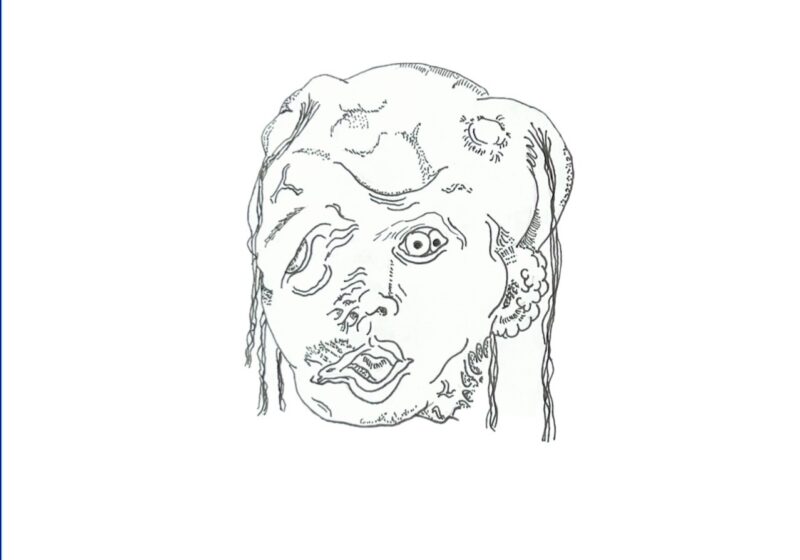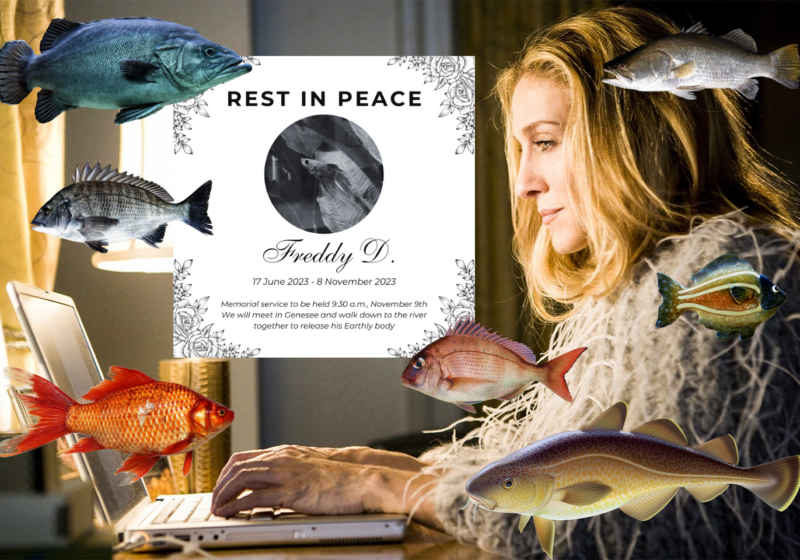Dear Campus Protesters,
Standing near the edge of the Sept. 24 protest on Eastman Quad, I reflected on my family’s experience with the Syrian Civil War in 2011. My grandfather’s family home in Damascus was seized by Hezbollah and Assad Regime forces, turning his once-peaceful neighborhood into a battleground. His house was looted, and my grandfather was beaten to the point where he still lacks full mobility in his arm.
As my grandparents fled, Hezbollah forces grazed my grandmother’s head with a bullet — but at the hospital, the doctors refused to treat her unless she signed a document stating that Zionist-funded opposition forces had shot her. The Assad regime was determined to paint the revolution as a Zionist/CIA conspiracy — a lie that, unfortunately, many Americans continue to believe.
When campus activists speak of Israel’s “senseless violence” or “systematic erasure,” as the recent protest’s main speaker and junior Sarah Aljitawi did, they fail to recognize that Hezbollah itself has been a major contributor to this cycle of destruction. Hezbollah’s aggression towards Sunni Muslims, Christians, and Jews is not a liberation movement — it is part of a broader Islamist agenda that began with the 1979 Iranian Revolution. Islamism (a political ideology rooted in the religion of Islam) seeks to overthrow secular regimes and replace them with an ultra-strict religious world order. Hezbollah, created in 1982 by Islamist clerics, aligns with Iran’s goal of spreading fundamentalist Islamic rule in the region.
On Feb. 7, 2012, Hassan Nasrallah, publicly admitted that Hezbollah had received “moral, and political, and material support in all possible forms” from Iran since its inception. In an interview conducted by TRT World in Feb. 2017, Sheikh Subhi al-Tufayli, Hezbollah’s first secretary-general, revealed that Hezbollah is “just a military piece tied to Iranian policies.” He explained that Hezbollah’s goals are fully aligned with Iran’s objectives in the Muslim world and the surrounding region.
Hezbollah has seized control of southern Lebanon through violence and manipulation, turning civilian infrastructure into weapons storage and launch sites for attacks. Footage of Israeli air strikes clearly shows Hezbollah launching missiles from residential areas, endangering those they claim to defend. These homes are not just innocent targets but military strongholds. Beyond Lebanon, Hezbollah has played a key role in the Syrian Civil War, backing Bashar al-Assad’s totalitarian regime in a conflict that has killed over half a million people. Between Lebanon and Syria, Hezbollah has killed hundreds of thousands of civilians and repressed the remaining population, including my own family.
Hezbollah’s tactics — manipulating local populations, hiding behind civilians, and stockpiling weapons — are not heroic acts of defense. These are calculated moves that strengthen Iran’s control over the Levant. Hezbollah isn’t fighting for the people of Palestine; they are pawns in Iran’s ambitions. Iran’s goal isn’t to liberate Palestine but to spread its Islamist revolution at the cost of countless lives. By embedding Hezbollah in Lebanon and extending its reach into Syria, Iraq, and Yemen, Iran has entrenched itself across the Middle East, using Hezbollah as its militant arm.
While Iran seeks domination of the Levant, activists are quick to frame Israel as the ruthless war-mongerer, often spreading explicit anti-Israel misinformation. On Sept. 29, @jvp.ur, the Instagram account for UR’s Jewish Voice for Peace (JVP) chapter, shared a post from the JVP main account (@jewishvoiceforpeace) featuring images of explosions in Lebanon, Gaza, Syria, and Yemen, all dated Sept. 29, with “STOP ARMING ISRAEL” overlaid on the images. An investigation reveals that each photo was misdated and misleadingly captioned to sway public opinion against Israel. The photo from Lebanon was actually taken two days earlier, on Sept. 27, following a bunker-busting bomb that killed Hassan Nasrallah. The Gaza photo was from the Rimal residential district in Gaza City, taken on May 16, 2021, according to its Getty Images description. The Yemen photo depicted a July 20 strike on a Houthi-run oil facility. According to the New York Times, Israeli forces destroyed the port in response to a Houthi drone attack on Tel Aviv that left one dead and at least 10 injured. The source of the “Syria” photo could not be identified, and the post’s caption provided no context for its origin. The post that @jvp.ur shared was deceptive, using incorrect dates, and omitting details about the targets being terrorists, and playing into the false narrative that Israel is engaging in senseless violence.
Most recently, on Oct. 4, the Instagram account @sjp.ur, associated with the unaffiliated campus group Rochester Students for Justice in Palestine (SJP), posted a message reflecting on their Meliora Weekend “Die In” demonstration and expressed solidarity with “those in Lebanon and Syria, and the many other people enduring escalating violence” by Israel. However, Israel’s conflict isn’t with the Lebanese or Syrian people; it’s with Hezbollah and Iran, the forces that took my grandfather’s home in Damascus and devastated countless others. By protesting for Lebanon and Syria without acknowledging Hezbollah’s atrocities, Rochester SJP, JVP UR, and other campus groups endorsing or promoting these protests are aligning with the very group that has oppressed and killed the civilians it claims to defend.
Before joining the next protest or posting on social media please consider whom you’re supporting. Exploiting the suffering of my family and their homeland to fit a simplistic narrative or to gain likes on Instagram, proves to me that organizers care more about demonizing Israel than supporting the individuals suffering from war. If your goal is justice and peace in the Levant, think carefully about who you’re standing with.





